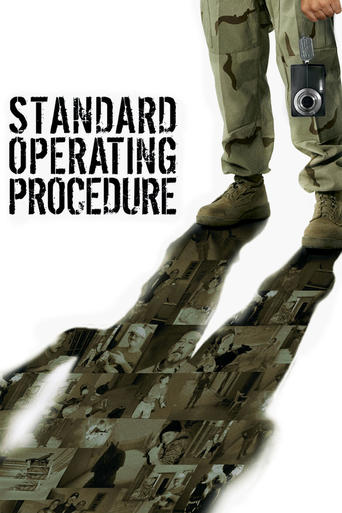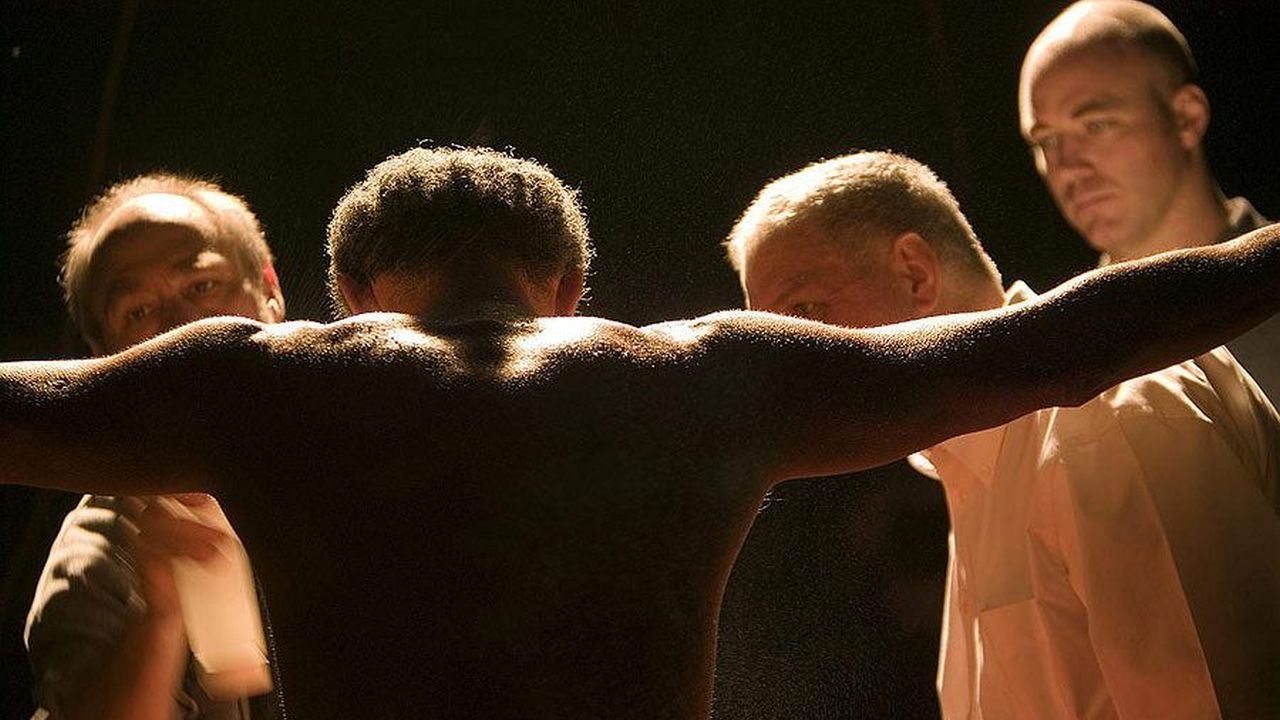JohnAU1965
Reading some reviews on this, I'm a little confused. The subject matter was dealt with effectively. The interviewees spoke frankly (if not specifically honestly) about their experiences. Was there some deep resolution to this? Hardly. The little fish fried and the middle- sized wandered away to promotions and congratulations, whilst the biggest (Rumsfeld, Bush & Cheney) avoided everything.Beyond that, the thing I found the most interesting was the personalities involved. After watching Camp X-Ray, some reviewers said that Kristen Stewart's character was impossible to have been that of a military person. The vulnerabilities and flaws she displayed as a human being apparently aren't SOP for the US military. Well folks, here's a reality check for you. Stewart's failings were nothing compared to those interviewed.From Brigadier General Janis Karpinski down to PFC Lynndie England, I saw a whole bunch of whining, simple cowards intent on mitigating their own crimes by dropping hellfire onto anyone else in their range. Not quite the shiny, perfect robots that some people seem to think should be present in movies regarding the US military.This doco was a critical piece in the puzzle that was the debacle of Iraq, the excesses of Bagram and Gitmo and all the other less publicised 'detention facilities' spread across the world. The 'world police' need some Internal Affairs action it would seem.The most amusing thing of it all was the oft-repeated line of 'I was only following orders'. Where have we heard that before? Oh yeah, that's right. 1946, Nuremberg. Lucky these were the 'good guys'.
ylmzyldz
"Standard Operating Procedure" is without a doubt one of the most terrifying films to come out in the last few years. It is a bold documentary which may be at times too gut-wrenching for some people to watch, not that this should ever prevent anybody from seeing it. It was a good decision to look at the events at Abu Gharib mainly through the eyes of the convicted military officers; and of course the photographs speak for themselves. Apart from the depth of the material, the filmmakers have done an outstanding job with the enactments, the visuals and the brilliant music by Danny Elfman. Although the documentary does point out and emphasize that high-ranking officers were never imprisoned for the depicted crimes, in my opinion, the film does fail to ask many essential questions that I feel should have been included in this documentary. Such as: Why do we insist seeing these events as more of an embarrassment on the part of the U.S. than an insult on the Iraqi prisoners? Since the soldiers frequently mention that they are "just following orders", who exactly are these orders coming from? Why will the U.S. Military not allow Charles Graner to be interviewed? What kind of a system is this that can categorize a completely naked "detainee" handcuffed backwards to his bed or another prisoner made to stand for a long time in a difficult position by the fear of being electrocuted as "standard operating procedure"? I am aware that the answers to these questions would stretch the format the director has chosen for this documentary, but I still believe that Errol Morris should have looked more openly into these territories in order to have made an even bolder film; and bold, courageous and very well made this film certainly is.
Roland E. Zwick
We're all familiar with the images that began flowing out of Abu Ghraib Prison in the spring of 2004 - photos showing detainees (some terrorists, others undoubtedly not) hooded and stripped, forced to assume painful and/or humiliating positions, often for hours on end, with American soldiers posing gleefully nearby, smiling and flashing thumbs-up signs for the camera. Once the pictures went viral, they came to symbolize not only the botched operation that was the Iraq war, but the fundamental failure of the U.S. military to win friends and influence people in a land the Bush administration claimed vehemently to be "liberating." In "Standard Operating Procedure," famed documentary filmmaker Errol Morris ("The Thin Blue Line") attempts to uncover the truth behind those photographs, mainly by allowing those who were most closely involved with the scandal to tell the story in their own words (including Private First Class Lynndie England, who, whether fairly or unfairly, emerged as the one clearly identifiable "face" and household name from the scandal). Morris provides no voice-over narration to accompany the interviews, just re-enactments of the incidents done in a quasi-surrealistic style, using slow motion photography and artsy graphics.Through his discussions with the principal players in the drama, Morris provides a probing study of the effects of war time stress on the human psyche. The film offers no easy answers as to exactly why the events at Abu Ghraib unfolded as they did; yet, while it doesn't turn the individuals involved into easy-to-blame villains, it doesn't completely exonerate them either. In fact, it is the seeming "normalcy" of these people, as they attempt to make their case for the camera, that renders their actions all the more unsettling. Morris also makes it clear that these low level individuals - many of whom have served time in prison for their crimes - were most certainly used as scapegoats for higher-ups in the military who managed to successfully deflect any personal culpability for the events that took place there.In a true journalistic coup, Morris was able to obtain grainy home movies shot at the same time that the pictures were being taken. As a result, we're able to witness the step-by-step process by which that infamous shot of the naked men stacked in a pyramid formation ultimately came about."Standard Operating Procedure" doesn't successfully address all the questions it sets out to answer, but that is hardly a weakness of the film, since it is dealing with a complex, messy situation involving complex, messy people caught up in a complex, messy war. One doesn't leave "Standard Operating Procedure" necessarily more enlightened that when one went in - just more well-informed. And that's perhaps the best one could reasonably hope for under the circumstances.
MacAindrais
Standard Operating Procedure (2008) ***1/2 What's in a picture? They say its worth a thousand words, but how many words are what's not in a picture worth. How about thousands of pictures? That conundrum is one of the major foci of Errol Morris, the eccentric genius documentarian's new project, Standard Operating Procedure. Although I was not engaged as I was with Morris's other works, Standard Operating Procedure is still a brilliant and fascinating look at the Abu Ghraib photo scandal.Morris interviews through the interrotron numerous members of the staff at Abu Ghraib prison. They give their thoughts on their complicity in acts of torture, and reflect back on their experiences. One of the film's major attractions is Lynndie English, that now infamous young woman so maliciously captured on film.What comes across most intently is that they were just doing what they were told. Those orders always come from off camera left or right. No one above Staff Sergeant was ever charged with anything. This is a point the documentary tries to drive home. In any bureaucratic structure, the big dogs never take the fall. You always sacrifice your little men, your pawns. If people knew what was really going on at the top, they would most surely revolt, or at the very least make a stink, and that would be it for you.Morris interviews one person who claims she took pictures because she knew it was wrong, to show the world. Is she telling the truth? Well she also discusses how it was "kinda fun" sometimes. She is probably guilty and innocent on all counts.Morris delves into his subject matter with his usual detective style. He says very little, and of course never ever dares show his face on camera. He only prompts from time to time. He has a style that is uniquely his own in the documentary world. I did not find Standard Operating Procedure to be on the same level as say The Fog of War or Gates of Heaven. But then again how many are? This is a more than worthy addition to the Morris repertoire.



 AD
AD

